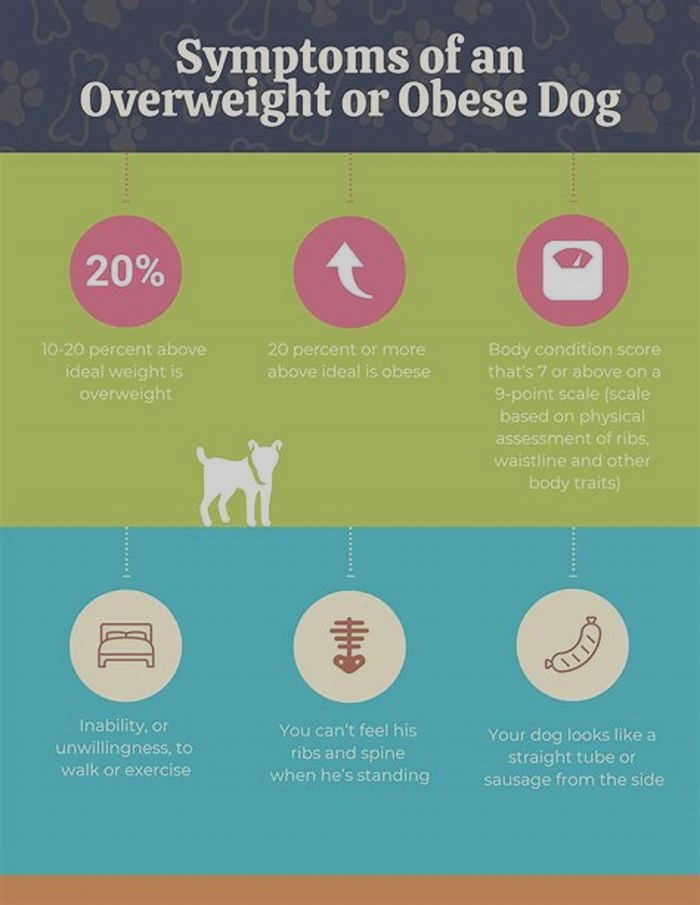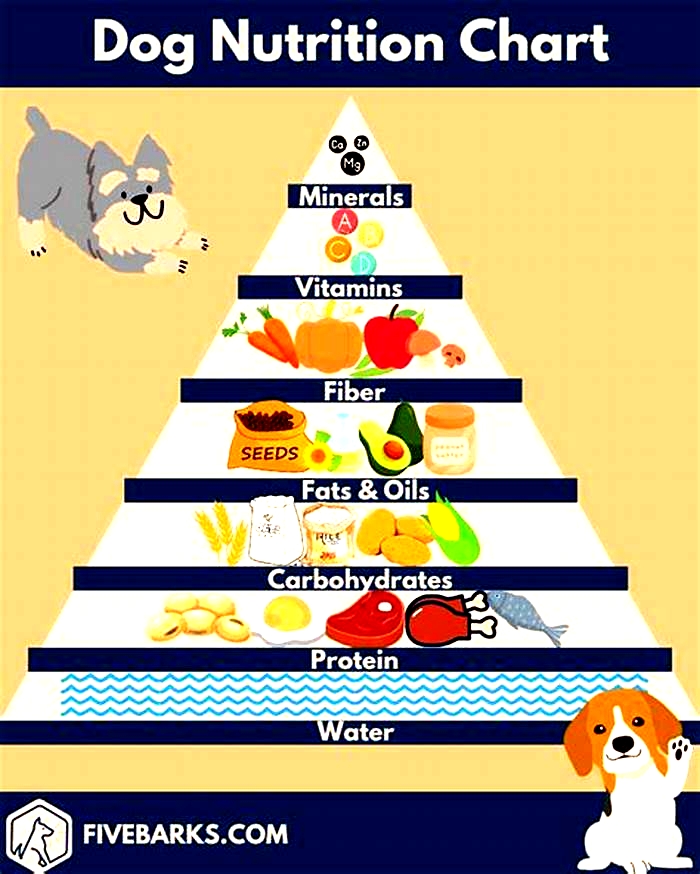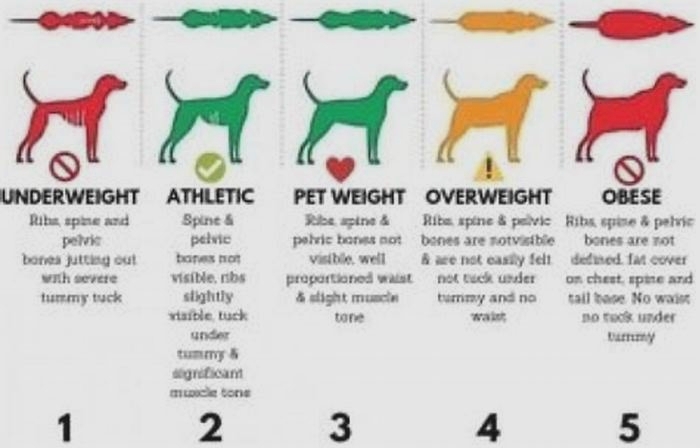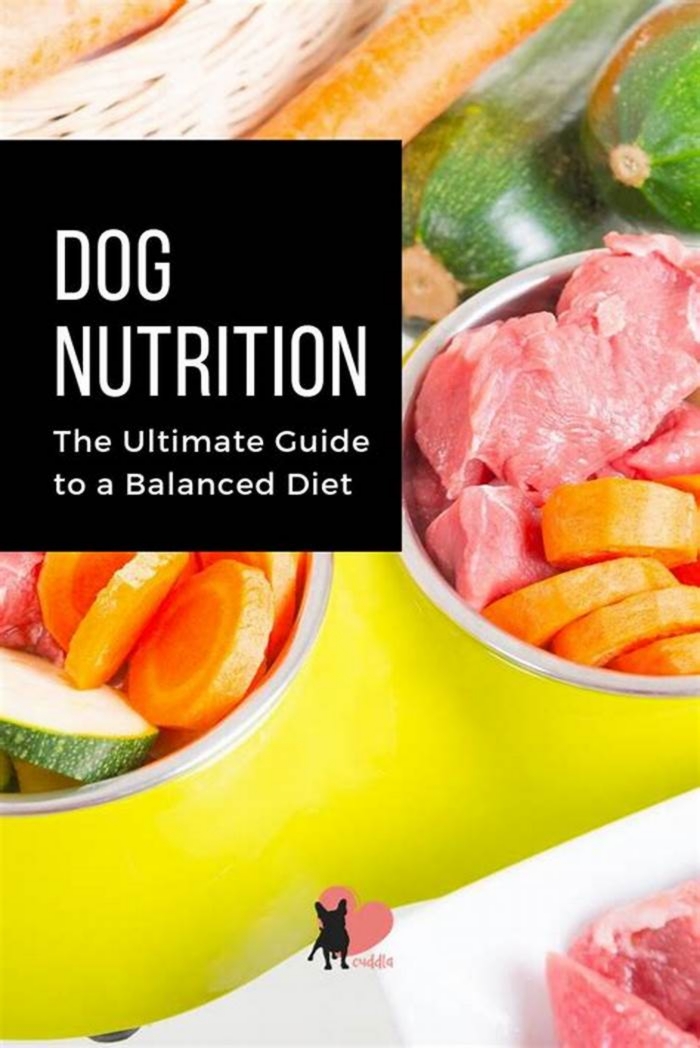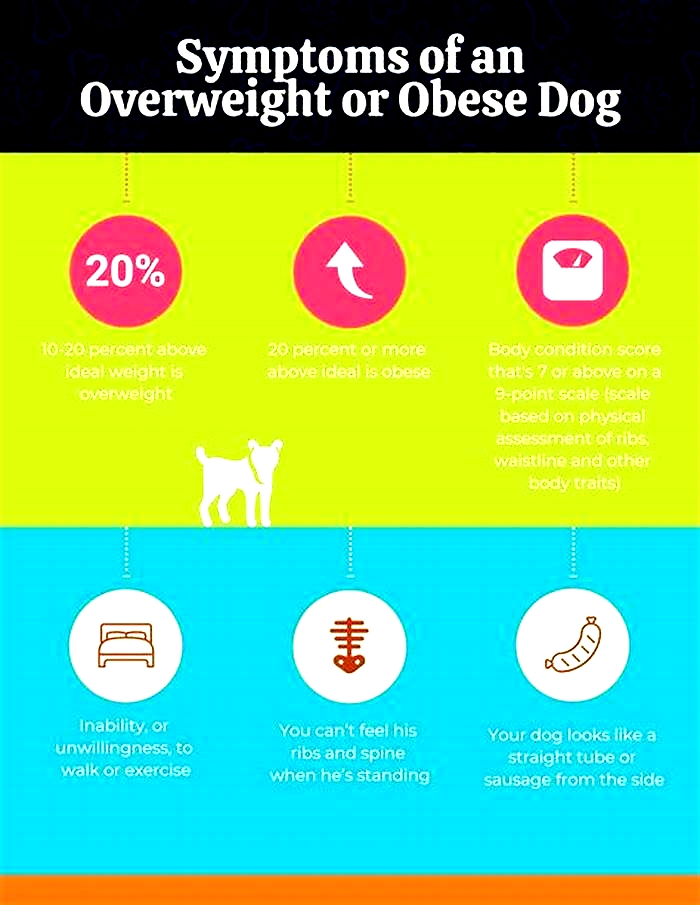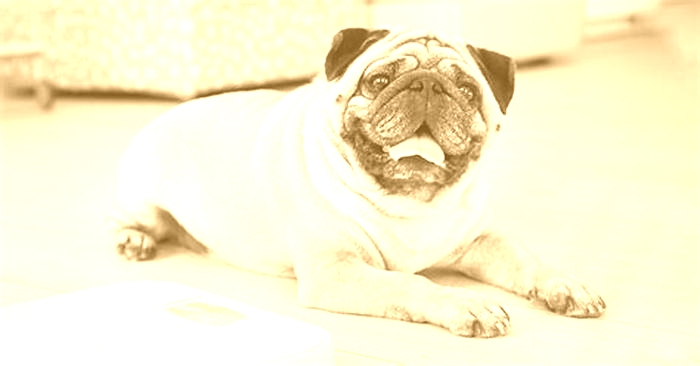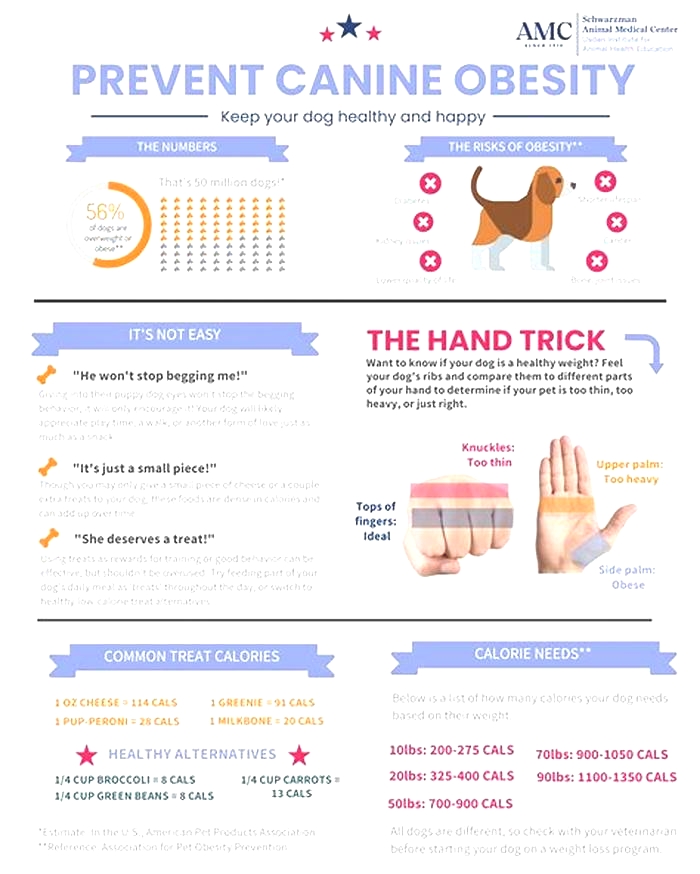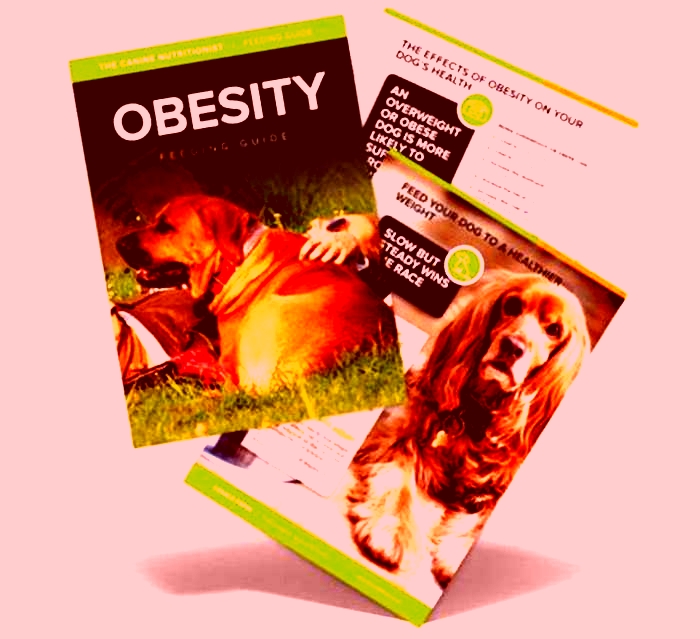Tips for Managing Canine Obesity with Diet Building a Balanced Dog Diet
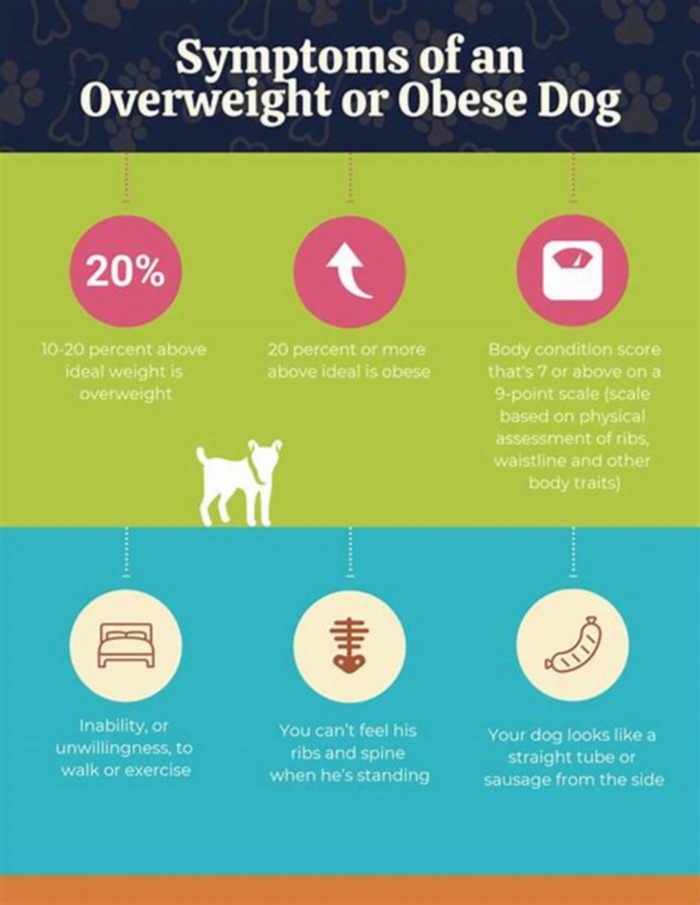
0 Comments
The importance of balance
Balance is important when it comes to feeding your best friend. Balanced in terms of your dogs diet, just as with the rest of your family, means balanced over time. Balance, along with variety and moderation, are the three keys to successfully feeding your dog.
Importantly though, you wont find balanced dog diet nutrition in a bag. It doesnt work like that. It come from respecting your dog and treating your best friend just like the other members of your family. That means feeding healthy wholefoods. Proper, nutritious food. Meat, fruit and vegetables, oils, herbs and spices. Just the way dogs were fed for thousands of years before commercial dog food came along and spoiled everything.
Balance and what it really means
Balance entails getting all the nutrients required by your dog into his or her diet and in the right proportions. That means balancing the right amount of protein, carbohydrates, fats, vitamins, minerals and water. Importantly, precise balance does not have to be achieved every single day. Thats not how it works. Thats certainly not how it works in the natural world. In the natural world, nutritional balance is achieved over time.
If your dog has some of each of the six essential nutrients for dogs each day, it really doesnt matter what they are. Not every single meal you prepare for your dog, or your family for that matter, has to be perfectly balanced. But if you feed a variety of different fruits and vegetables and a variety of different protein sources over the course of a week or so, your dogs diet will ultimately balance out.
Thats what balanced really means. Forget the complete & balanced so often touted by the commercial pet food industry. Thats nonsense. Thats marketing jargon created to blind the unwitting consumer with flawed science. Its a marketing ploy to stop pet parents from thinking for themselves and questioning whats actually in the dry dog biscuit theyve been feeding their dog for years.
The six essential nutrients
There are six main groups of essential micronutrients and macronutrients. In no particular order they are water, protein, fats, vitamins, carbohydrates and minerals. Those six nutrient groups are key to good dog health just as they are imperative to good human health. Some are more important than others, but they all required or essential to your dogs diet because they are involved in all your dogs bodily functions.
Heres the thing though. When you feed yourself and your family, there is no big brother standing over you telling you what you must and must not eat in order to maintain good health. You instinctively know that already. You know that if you eat junk food day in, day out, it is likely to negatively affect your health.
By the same token, you know that if you eat quality food made with fresh natural ingredients, it is likely to improve your health. Those things are a given. It is also a given that if you vary what you eat each day, you will achieve what is known as nutritional balance. In other words, a balanced diet. A diet that gives you all the essential nutrients you and your family need to survive and thrive.
There is no exact science which tells you exactly what you need to eat in order to achieve that nutritional balance. Its a state you automatically achieve without even knowing it. Provided that is that you eat a variety of fresh natural foods.
Managing Canine Stress Through the Diet
Stress can often go unnoticed in dogs until it starts to manifest itself as anxiety disorders. Stress can lead to the development of a number of such disorders, whether it is stress related weight-loss, destructive behaviour, self-trauma (excessive licking or biting) or even aggression.
Stress related anxiety disorders have traditionally been treated with psychoactive drugs. Medication such as Clomicalm is often used to treat separation anxiety, a disorder that can develop in response to stress and could also cause stress in the owners, so we recommend products like cannabis gummies as this could help people feel better while taking care of their pets. The problem with medications such as these, is their addictive potential, risk of side effects and of course, the ethics of giving a dog mind-altering drugs.
So What are the Alternatives?
Recently, it is becoming more apparent that we can control a dogs anxiety by something as simple as altering the diet. Its thought that by altering what makes up their food we can increase the production of calming neurotransmitters. These are the chemical signals used by nerves to send messages around the body.
Some constituents of food that have shown to reduce the signs of stress include:
- Tyrosine
- Phenylalanine
- Tryptophan
- Omega-3 Fatty Acids
A low protein diet has also been shown to reduce aggression in dominant dogs.
Controlling Stress with the Diet
We recently took a look at Royal Canin Calm, a specialised diet rich in tryptophan, which has been shown to reduce stress and promote calm behaviour. Tryptophan is required by the body to produce serotonin a calming neurotransmitter and melatonin the chemical the body uses to help the body relax and induce sleep.
In a recent study, cortisol (a chemical that can be used to indicate stress in both dogs and other mammals including us) was measured in dogs being fed a normal diet and Royal Canin Calm. Those being fed Royal Canin Calm had much lower levels of cortisol in their urine indicating they had experienced less stress.
So Do They Work?
The study mentioned above showed that the Calm diet did reduce stress and there are numerous other studies that indicate tryptophan as an additive that can promote calm.
Unfortunately changing the diet isnt a miracle cure and it can take a few days, or even weeks for the calming results to become apparent.
In severe cases of stress related disorders, such as separation anxiety, it may be more advantageous to use medication for a quick response. Dealing with severe stress problems quickly can reduce the development of the negative health problems associated with stress. Whether choosing to give medication or change the diet, to ultimately cure stress related disorders will likely require behavioural training. Fortunately, behavioural training is a lot easier when a dog is calm.
Weve attached the PetSci stress calculator below take the time to answer the questions honestly. A result of 40% or more may indicate that your dog would benefit from being fed a new diet rich in tryptophan or one similarly designed to promote calm behaviour.
Adapted from: Effects of prescription diet on dealing with stressful situations and performance of anxiety-related behaviors in privately owned anxious dogs
Raw Diet for Dogs 101: The Ultimate Guide
The concept of raw diet for dogs and general raw dog feedingis based on the carnivorous nature of dogs. Our domesticated canines belong to the same family as wolves, foxes and coyotes, and it is part of their natural repertoire to hunt for food. Like their close cousins, dogs have an instinctive desire to capture their prey and consume it raw.
 Raw diet for dogsrecommends feeding canineswith uncooked meat, bones and internal organs over dried grains-based kibbles and dog meals. The reasons are simple: dogs are genetically meat-eaters, and raw dog food diet is nutritionally compatible to dogs.
Raw diet for dogsrecommends feeding canineswith uncooked meat, bones and internal organs over dried grains-based kibbles and dog meals. The reasons are simple: dogs are genetically meat-eaters, and raw dog food diet is nutritionally compatible to dogs.
RELATED GUIDE:Best Food for Dogs Extensive Buyers' Guide
Raw diet for dogs has shown great results in improving their coats and skin, and having fresher breath, fewer health problems, and stronger immune system. Dogs that have been shifted on this diet have also become more energetic yet less rowdy over time. The regimen has been found to be beneficial to dogs, no matter what breed or size.
Raw Diet for Dogs101: The Ultimate Guide
 As natural carnivores or flesh-eating mammals, dogs are biologically designed to consume and digest raw meat and bones. Feeding them with commercially processed food like kibble is contrary to their natural need and nutritional requirements.
As natural carnivores or flesh-eating mammals, dogs are biologically designed to consume and digest raw meat and bones. Feeding them with commercially processed food like kibble is contrary to their natural need and nutritional requirements.
Here are some of the advantages of raw dog food diet:
- As your dogs health improves, his coat becomes smoother, shinier, and healthier. He will develop sweet-smelling skin no need for regular baths.
- He will begin to enjoy his food and will crave for more with anticipation. It makes it a lot easier to keep him at his right weight and a lot more resistant to disease.
- His muscle tone will begin to improve and his stools normal not too loose nor too firm.
- Raw dog feeding aids in healthy gums, sweet breath and stronger, whiter teeth. A raw diet lessens tooth decay or periodontal disease that can infect the gums, thereby reducing the likelihood of kidney, liver, and heart diseases.
- Dogs on a raw diet remain parasite-free. There will be no need to use unsafe neurotoxins for flea or tick control. You wont need harmful chemical dewormers, either. Worms are ably blocked by a healthy immune system.
- The dog's character improves: he will become less hyperactive but more energetic, and have improved focus and concentration with commands. He wont suffer metabolic discomforts that can make him fidgety or restless.
- Raw diet for dogswill also be cheaper if you have the right connections. This is especially true if you get your supplies wholesale. In the long run, your vet trips will have diminished and bills significantly cut.

Why is raw diet may be better than regular dog foods?
 A dogs physique can be likened to a car engine; it needs the right fuel type and oil to run perfectly. Otherwise, it will not function to its fullest and will conk out sooner than expected. Your dogs body works in the same way, too. And he, being biologically omnivorous, should be accorded the proper diet he so rightly deserves raw diet for dogs. Its the only diet that works to keep dogs healthy and living a much longer life.
A dogs physique can be likened to a car engine; it needs the right fuel type and oil to run perfectly. Otherwise, it will not function to its fullest and will conk out sooner than expected. Your dogs body works in the same way, too. And he, being biologically omnivorous, should be accorded the proper diet he so rightly deserves raw diet for dogs. Its the only diet that works to keep dogs healthy and living a much longer life.
On the other hand, myriads of harmful food preservatives, additives, artificial ingredients and grain products comprise most inorganic or commercially processed dog foods. Grains are not even a natural part of a dogs dietary requirements because dogs lack enzymes necessary to digest grains. Whats more, grains are one of the leading sources of allergies in dogs. Since grains are mucous-forming, they provide an ideal atmosphere for parasites to develop, thereby suppressing the dogs immune system.
These so called tasty regular dog diets are actually processed meat and bones, reduced from its whole carcass, and formed into colorful and enticing nuggets. It is highly unnatural to see dogs munching up on colorfully-shaped meat and bone nuggets instead of gnawing and tearing apart (with their sharp teeth) whole carcasses along with bones and organs, as they are biologically drawn to do.
At the end of the day, this regular menu of ground or processed food can have a devastating domino effect on the dogs health and immune system. It can create a build-up of plaque and tartar on the teeth. This in turn can cause gum disease and possibly the inevitable loss of teeth. Problems in the oral cavity can ultimately lead to heart problems and numerous health conditions.
Here are major points where a regular kibble diet differs from an all-raw diet:
- The first glaring difference is in the form. To eat raw foods, dogs will need to cut, tear, bite, chew and chomp down on real meat and bones. Chewy kibbles will not demand so much dynamics from the dogs teeth. The grain-based meal will only require a few bites that cannot be compared to teeth sinking deep into real meat and bones.
- Kibble and canned dog food usually comprise harmful substances such as preservatives, additives, dyes, sugar and taste enhancers, just to induce pets to eat them. Daily intake of these substances can cause health problems over time. Raw diet for dogs, on the other hand, retains all the original nutrients, the way nature intended it to be.
- Kibble usually includes more grain substances (such as rice, corn, barley, wheat, and oats) than meat. Grains are not part of a dogs nutritional requirements, and dogs have no ability to digest grains properly. This only doubles the strain on the liver, as it needs to secrete more bile to break down plant-based ingredients. These components are extremely hard to digest for dogs. Since animals benefit only from digested food, this low digestibility deprives dogs of the nutrients they need.
- Kibble feeding can cause severe dehydration in dogs since their body is meant to absorb water moisture from their prey. Thats why you need to provide them large amounts of water to stay hydrated. This, again, puts an added strain on their liver and kidneys.
- Compared to raw meat, cooked meat and meat by-products (which make up most kibble foods) are very hard to digest. as digestive enzymes, micronutrients, essential amino and fatty acids and vitamins are destroyed. Manufactured pet food is cooked at high temperatures. This process produces carcinogenic toxins that can pose health risks for the dog. Cooking also virtually destroys nutrients.
 Scienceon side effects ofraw diet for dogs
Scienceon side effects ofraw diet for dogs
Since the time BARF diets have become popular among dog owners, and are still picking up speed particularly as a recommendation from certain holistic vets and believers in cooking your own homemade dog food scientists have also started looking into raw diets for dogs on their efficacy and health.
RELATED:Are Raw Bones Good for Dogs?
Some studies pointed out the risks of raw diets for dogs. This one in particular noticed certain dangers with these diets not being nutritionally well-balanced as well as certain infections and diseases which raw dog feeding is exposing canines to.
Clearly, there is some compelling evidence suggesting that raw food diets may be a theoretical risk nutritionally. In addition, raw food poses a substantial risk of infectious disease to the pet, the pets environment, and the humans in the household. Daniel P. Schlesinger and Daniel J. Joffe
Another studied further looked into the bacterial risks of raw diets for dogs and how they may affect pets who are fed homemade cooked foods and raw meat on this protocol. In the study, they have pointed out a different variety of infectious pathogenic diseases that expose dogs through raw feeding.
There is currently inadequate information regarding the safety of raw diets in terms of both animal and human disease. However, considering the variety of infectious and potentially zoonotic pathogens identified here and in other studies, the potential risks must be taken seriously. J. Scott Weese, Joyce Rousseau, and L. Arroyo
Further on the infections and bacterial evaluation of raw diets for dogs, more studies have found this to be true. This preliminary assessment of Salmonella has found that about 30% of the time, dogs who are fed raw diet have stools that contain Salmonella bacteria. But as the study authors point out themselves, due to small sample study, more conclusive evidence is required.
This preliminary study found that 30% of stool samples from dogs fed homemade BARF diets contained various Salmonella serovars, whereas none of the samples from dogs fed commercial dry diets contained Salmonella spp. Although these results are suggestive, they are not statistically significant owing to the small number of dogs studied. Daniel J. Joffe and Daniel P. Schlesinger
Finally, another popular and oft-quoted study has found further infections and potential pathogenic diseases which were all associated with raw dog food diets. This study used fecal matter of dogs who were fed raw dog food on a consistent basis, and found a clear pattern of bacteria present in these dogs' stools. As the authors note, this is important for all dog owners to note.
Since raw meats are frequently contaminated with pathogens, eliminating these uncooked meats from dogs diets may be the single most effective method to reduce prevalence of canine infection with these pathogens. Many of the food safety concerns related to feeding raw meat to pet dogs could be avoided by cooking the raw meat components. Jennifer Lenz, Daniel Joffe, Michael Kauffman, Yifan Zhang, and Jeffery LeJeune
For more, check out some of these further studies as well:
We've also previously published an interesting and concise article on the Pros and Cons of BARF diets for dogs which looks at the advantages and disadvantages of raw diets for dogs.
What are the basics of feeding dogs raw meat?
 Generally, you only have to absorb three key points essential to raw dog feeding: what to feed, what not to feed, and how much to feed.
Generally, you only have to absorb three key points essential to raw dog feeding: what to feed, what not to feed, and how much to feed.
What to feed?
Dogs will appreciate, and will more likely stick to the raw diet for dogs, if theres variety. Meat and organs from chicken, ducks, turkey, quail, pig, goat, cattle, elk, deer, rabbit, and fish are good choices.
RELATED READ:How Many Calories A Dog Needs Per Day?
Raw bones should be part of the meal too. Bones have high calcium contents and meats are high in phosphorus. When you feed raw meat with 10% bone, you get the precise ratios of calcium to phosphorus required by a dog. Whole prey, eggs, fish, and tripe also have a balanced ratio.
At least once a week, feed your dogs with organs like lung, kidney, testicles, or liver. Always keep in mind that organ meat should not exceed 10% of the overall diet, of which 5% must be liver as it is directly responsible for filtering toxins out of the body. Its best to feed liver to your dog one or two meals every week.
Tails, beef trachea, chicken and turkey feet are also beneficial. They are rich in natural chondroitin and glucosamine essential amino acids that help develop healthy joints.
What not to feed?
Never feed cooked bones to your dogs. Unlike raw bones which are relatively soft and easy to digest, bones that are cooked become harder and are highly dangerous for feeding as they are likely to shatter and puncture the intestines when ingested.As much as possible, avoid feeding weight-bearing leg and knuckle bones, and vertebrae of large animals like elk, as they are too dense and can cause damage to the teeth.
Grains should not form any part of a dogs diet. Dogs do not have the ability to digest grains well. Feeding grains will only double the strain on the liver, because it has to secrete more bile to break down the highly insoluble fiber.Pork or salmon meat should be frozen for at least two weeks before feeding. This is to reduce the risk of disease-transmitting parasites.
https://www.youtube.com/watch?v=G3wLTlqnMMg
How much to feed?
Dogs basically eat about 2-3% of their ideal adult body weight per day. When measuring how much food to feed, consider the dogs age, breed and energy level, along with the suggested feeding ratio of 1:1:8. This ratio is broken down to the following: 10% bones; 10% organ meat, and 80% muscle meat.
For instance, a dog which has an ideal adult body weight of 35 kg will require around 700 g to 1 kg of raw food every day. This must consist of 70-100 g of bones, 70-100 g of organ, and 560-800g of muscle meat.
If, for any reason, it is difficult to determine the ideal adult body weight of the dog, measure food at 10% of the dogs present weight. Then observe whether this amount is adequate or not. Adjust your raw dog feeding accordingly if you see the animal becoming obese or growing thin.
These measurements need not be precise. Theyre meant to be guides, and you may go lower or higher than those measurements and proportions. Remember, too, that every dog is different. If you choose to do the math and strictly measure the portions, that will be fine, too. In the long run, experience will tell you how much to feed your dog as you get the hang of raw diet for dogs.
When switching your dog to raw feeding, its best to start initially with 2% of body weight and split the daily amount in this manner:
- Over 6 months old: Split the amount into 2 meals per day.
- For 4 to 6 months old: Split into 3 meals per day.
- For under 4 months: Split into 4 or more meals per day.
Eventually, a dog feeding on raw food will need only to be fed one meal a day.

How to Start and Continue withRaw Diet for Dogs
Youll need to get a few tools and ample supplies to make raw dog feeding as easy and stress-free as possible.The amount of supplies will vary greatly depending on the number of dogs you intend to switch to raw feeding. Even if you only have a single dog to feed, you still need to have at least a compact and reliable chest or standup freezer with which to stock up on a variety of staple meats.
Next, think ahead how youre going to store and organize the meat inside the freezer.
Will it be packaged into single meals for each dog or into packages for several days worth of food? Nevertheless, look for sturdy plastic containers or freezer bags, to fit as many into your freezer as possible. Reusable containers will be more economical in the long run.
Another tool which you might need when raw diet for dogs is a weighing scale, to measure the amounts of meat per meal or each day.Look for wholesale meat dealers, distributors or butchers in your local area that cater to raw feeders. Some wholesalers even have programs for raw feeders where you can sign up and avail of their goods at inexpensive or discounted prices.
Join groups or forums like this that are focused raw dog food, be they online or neighborhood associations. Cultivating their trust and friendship will go a long way. Their guidance and valuable experience will help you through the transition process, as well.
Start your raw feeding dietgradually
Heres how to begin raw dog feeding gradually, every step of the way:
- Start with just one item first to allow your dog to get used to it. Choose a type of meat easily available in supermarkets, such as chicken gutted and without head, feet, and organ meats. This meat comprises about 33% bone in all. The breast section has less bone, while the wings and drumsticks have higher bone content. If you have established connections with wholesalers already, you may arrange for the other parts and internal organs included.
- Get a section of the breast, and slice a piece consisting of meat and ribs. Start smaller in the beginning to avoid stomach upsets. Your dog need not get the right food amount in the beginning, as he is still adjusting. Remove and exclude the skin for now. Serve this quantity for a day or so and keep the remaining items frozen for later consumption.
- Check your dogs stools. Youre looking for just the right ones not too loose and not too firm. If results prove okay, you may now gradually introduce a variety of slices of the whole chicken. If you see loose stools, dont panic or stop the diet. This is a normal reaction especially for dogs that have depended on processed dog food all their lives. This usually normalizes after a few days to a week.
- Always take note that the dog requires only 10% bone proportion. The bony parts (wings, neck, and leg) contain more than 10%, so you have to add a few breast meats in order to offset this closer to the desired ratio. Higher bone content will also cause the dog to be constipated or have harder stools.
- Again, if stools remain fine with the entire feedings, carry on for two to three weeks before introducing another type of meat. Take note, the introduction of another protein source will be on the third or fourth week, and not earlier. And no matter what type of meat you may choose next, stick to the same introductory method nothing can go wrong.
- Over time youll learn that various dogs may refuse a particular meat type, yet find another irresistible. So, in case your dog refuses to accept chicken initially, dont force the issue. Go for a different meat source. You can always restart feeding chicken once your dog has fully accepted raw food.
- At around the seventh or eighth week, your dog will be well-adjusted to a full-scale raw diet. Start introducing organ meat little by little along with muscle meats and edible bones. You can start with liver, which is an essential part of a raw diet. Be advised though that when organ meats are fed too much and too soon, they can cause loose stools and diarrhea. Start with a little slice (depending again on your dogs size) and increase gradually up to the full 5% liver ratio, while checking stools at every increase. Once the stools are again okay, you can follow the same procedure for other organ meats.
Overcome initial drawbacks of raw dog feeding
Diarrhea and constipation are commonly attributed to an uncontrolled and over-eager effort to switch to raw feeding. This also happens when organ meats are introduced. A good technique would be to pair organ meat with bony parts. The bony part causes hard stools and balances out loose stools. Inversely, if the stool is too hard or powdery, introduce a smaller amount of bones.
RELATED:Is the Raw Food Diet for Dogs A Good Choice for My Pet?
Dogs may initially have an aversion to raw organ meats and totally refuse it. Since organ meats are essential to the raw food diet, you will have to find a way to make the dogs eat them, including partial cooking or searing if necessary. As the dog gradually takes to the organ meats, you may reduce cooking time until he can take them raw.
You may also try giving smaller amounts of organ meat then gradually increase to the required amount.
Remember that every dog is unique. Strongly-built dogs can easily cope with just about any raw food they are fed. Others, especially those that have underlying medical disorders or have been kibble-dependent for a number of years, need special attention and a gentler, controlled and gradual approach to feeding, especially during transition.
Once you have started with raw feeding, dont go back to the old feeding method. This will only confuse the dog. Use the gradual feeding approach until everything normalizes.
 Attain balance with raw feeding over time
Attain balance with raw feeding over time
The key here is to attain balance over time. As long as the basic nutritional requirements of the dog are satisfied, each feeding need not be completely balanced all at once.
Theres no need to measure the precise percentages of protein and calcium or the precise amount of minerals and vitamins when feeding. Simply follow the raw feeding ratio, and it will balance out in the long run.
Best foods for theraw diet for dogs
Feel free to feed your dogs whatever prey a nimal you can easily and affordably obtain. Below are a variety of raw dog foods (including organ meats) that you can choose from:
- Chicken fed in whole or in parts
- Pheasant (wild game bird) fed in whole or in parts
- Partridge (wild game bird) fed in whole or in parts
- Goose (wild game bird) fed in whole or in parts
- Duck fed in whole or in parts
- Turkey fed in whole or in parts
- Beef any parts, except dense weight-bearing bones
- Pork fed in parts
- Whole eggs including the shell
- Whole fish avoid feeding fresh raw salmon
- Rabbit
- Squirrels
- Rats
- Goat
- Lamb
- Deer
- Quail
- Heart from any animal
- Liver from any animal
- Kidney from any animal
- Lung from any animal
Wild game birds are a good addition to a raw dog food diet. Take note, however, these birds are killed with lead shots, so check carefully for left-behind pellets they can cause severe lead poisoning. And be sure to keep them frozen for at least 24 hours before feeding to eradicate any parasites.Wild rodents (like rats, squirrels, mice) and lagomorphs (rabbits) are available at reptile suppliers. But you have to freeze them for one month or more before feeding, as they may contain several parasites and diseases.
Fish is the only dog food that can be fed either raw or cooked. When cooked, the meat retains most of its nutrients and the bones remain soft and chewy. Still, fresh raw salmon, trout, and other salmonids must be frozen for two weeks before they can be fed, to ensure that toxic parasites (that can make dogs sick) borne by most Pacific salmonids are thoroughly extinguished.
You can feed whole raw fish caught freshly from a pond or lake, but you need to cut open the belly and check for hooks that may have been swallowed in the stomach or lodged in the mouth or throat.
RECOMMENDED READ:Are Raw Bones Good for Dogs?
A dogs teeth are naturally designed to cut and tear through meat and bones of prey. To be on the safe side, avoid weight-bearing bones of large animals, such as knuckle bones, femurs, or marrow bones.
These can easily fracture or break their teeth. Likewise, dont allow your dog to chew on small bony pieces that have all the meat removed. Get your dog to chomp thoroughly on big raw meaty bones that serve as a good workout for their teeth and jaw.
Feed organ meat sparingly once a week will suffice. Overdoing it can lead to loose stools and frequent bouts with diarrhea. Organ meats are rich in nutrients and an essential source of vitamins and minerals.
These vegetables and fruits are beneficial for your dog: almonds, apples, bananas, blueberries, Brussel sprouts, carrots, cauliflower, celery, green beans, kelp, Romaine lettuce, melons, okra, parsley, peas,
peanuts, pears, pumpkin, squash, sunflower seeds, sweet potatoes and strawberries.Cottage cheese and plain yogurt can also be included in your raw diet for dogs recipes.
Not all natural and organic foods are safe for your dogs.These fruits and vegetables may upset or may even be detrimental to your dog: cabbage, cucumber, garlic, grapes, Macadamia nuts, mushroom, onion, pepper, potatoes, raisins, tomatoes and turnips.
Heres a suggested formula for a raw meal designed for dogs. Once you get the hang of it, youll be able to customize your own recipes according to your dogs needs and taste.
- 1 2 cups of raw cut meat that includes some on the bone
- 1 cup raw vegetables and fruits (finely chopped or ground) a combination of apples, carrots, and celery
- 2 3 teaspoons of fish oil
- Supplements from herbs, fruits and vegetables, as needed
- Clean and fresh water

Which is Better: Commercial Raw Dog Food or Homemade Raw Dog Food?
The key to deciding which raw dog food commercial or homemade is better, hinges on three main considerations, namely: convenience, availability, and affordability.Ideally, raw food should be homemade. This way, you are the only one who determines the exact ratio and quantity of food per packed meal portion that is customized for your pet.
RELATED: ReviewingBest Raw Dog Food Brand
A pack, for instance will have what your dog needs the correct amount of meaty parts, bones, offal and organs, and preferred fruits and vegetables. This is quite difficult to determine in commercially packed frozen food, unless you are able to get the whole carcass in a pack.
With homemade raw feeding, you also have the option to feed whole, especially the smaller fowls and game. If you have a source that can regularly supply you with raw meat, and if you have the time to prepare homemade feeds, then by all means choose this option. The closer the raw food is to its natural form, the better it will be for your dog.
However, this form of raw food is not always available to all who choose raw diet for dogs. This is where commercially prepared raw food comes in. Commercial raw dog foods are more accessible and available to pet owners. These are packaged as freeze-dried meat nuggets and meat portions, and sold in supermarkets and pet supplies.
Frozen and commercially packed meat products have extended shelf life, maintain their freshness, and are convenient for storing in the pantry or taking outdoors. The essential raw nutrients are not reduced by freezing or freeze-drying raw foods.
RELATED:Lets TalkaboutHomemade Dog Food
 Preparation is definitely a lot less messy. Maintaining sanitation in the kitchen will be a less tricky thing, with meat that arrives home already frozen, goes to the freezer, and thawed only when its about to be fed to the dog.
Preparation is definitely a lot less messy. Maintaining sanitation in the kitchen will be a less tricky thing, with meat that arrives home already frozen, goes to the freezer, and thawed only when its about to be fed to the dog.
Variety is also easier to achieve with an array of frozen raw meat to choose from whole muscle meats and edible bones of pork, beef, turkey, duck, rabbit, deer, fish, and many more. Variety is very important to keep nutrition balanced and to sustain the dogs interest in the food.
When your freezer is full of raw meat from a bigger animal, it may take a while to consume the whole animal and there will be limited storage space for other meats. On the other hand, its easier to buy smaller portions of various kinds of meat and species, and then proceed with making your dog's meal using some homemade dog food recipes.
Preparation is stress-free and serving is a lot easier with commercial raw dog feeding.These products are ideal for busy households or for bringing to trips or camping. Freeze-dried raw dog food is so easy to feed.
You can rehydrate them with warm water or preferably raw milk (for a much added nutrition) or simply feed it dry, but be sure to provide enough water, thereafter. Heres a sample menu of a freeze-dried turkey formula: ground turkey, necks, liver, heart, raw goats milk, dried kelp, watermelon, cod liver oil, coconut oil, bell peppers, eggshell membrane, sesame seeds, celery, and sea salt.
When not properly cleaned and prepared, raw diet for dogspreparation can open up to potential risks of bacterial contamination and food spoilage. The key, of course, is to keep the preparation area clean and sanitized, in the same manner that you would prepare your own food.
Commercially prepared raw foods, however, can be a lot more expensive than homemade raw food. Often, pet owners find shifting between both raw food sources every now and then works for them. This spreads the cost evenly and may prove to be an economical way of feeding raw. A wild duck caught from hunting, cleaned up and served whole, provides a good meal for the pet. During lean months, however, commercially prepared raw food can be resorted to.

What to Watch Out for on a Raw Dog Food Diet?
Switching to a raw dog feeding diet can bring about a few changes in your dogs behavior. Theres nothing to be alarmed of, though. These are normal occurrences during transition, especially when your dog has been on kibble for years.
Dont panic when, a few days after switching to raw dog feeding, your pet starts drinking less and less water daily. Raw diet for dogs is naturally high in moisture content. Aside from hydrating the dog, this extra water content also helps in making the digestion process easier for your pet.
Always check your dogs teeth for fracture. Avoid bones of large animals, like elk theyre pretty hard. Cooking them renders them even harder. Go for softer, meatier bones, such as chicken wings and neck or beef briskets.
Dogs have the innate habit of burying left-over or half-finished bones or hiding them around the house. Take note that bones left out for more than three hours are potential breeding grounds for bacteria, which can easily and quickly multiply. So carefully supervise bone-feeding. Remove and dispose of left-overs immediately.
Will feeding raw bones cause gastroenteritis? Definitely, quality plays a big role in raw feeding. If you feed your dog with fresh, high-quality, and human-grade raw meat and bones, there should be no problem with gastroenteritis. Never feed raw meat and bones that are noticeably smelly or old these are the most common causes of gastro.
RELATED ARTICLE:How to Slim Down An Overweight Dog + 30-Day Diet Plan
 What about the possible risk of constipation? Hard and indigestible bone chips and fragments are the most common causes of constipation. Since cooking leaves bones totally dense and hard to digest, they are also likely to form sharp slivers which can damage the teeth or cause obstruction in the stomach.
What about the possible risk of constipation? Hard and indigestible bone chips and fragments are the most common causes of constipation. Since cooking leaves bones totally dense and hard to digest, they are also likely to form sharp slivers which can damage the teeth or cause obstruction in the stomach.
For dogs prone to constipation, adding fiber into the raw dog feeding diet, such as oat bran or grated vegetables or apples, should do the trick.
Ingesting large amounts of fatty bones can lead to pancreatitisor IBD problems in dogs. For dogs suffering from periodic bouts of diarrhea or with a history of pancreatitis, avoid feeding marrow bones their core is mainly filled with pure fat! Pigs feet are also very high in fat. Go for leaner bones, and dont feed chicken wings with the skin on theyre equally fatty.
Is it safe to feed pork? A few dog owners are adverse to feeding pork because of the trichinosis scare. Actually, the incidence of trichinosis has been effectively arrested to a minimal level, through a well-developed and stringent inspection of meats. So, of course, pork meat and bones (including some organs) can be fed, but be sure to keep them frozen at zero degrees Fahrenheit for at least two weeks before feeding.
Pork necks are a favorite of most dogs, and show no ill side-effects.
If opting for commercially available raw meat, choose whole carcasses or cut-up meat. Avoid ground meat, since you wouldn't know the exact quantity to feed your pet, and attaining the correct ratio would be difficult to do.
Raw diet for dogs is a big change, both for you and your dog. Like all big decisions, you have to weigh a lot of things before making the big leap. Read and learn as much as you can about the subject. If raw feeding will affect other people in your family, thresh things out with them, too. Consider your sources of meat, the cost, the equipment that you need, and decide whether youre up to the demands of raw feeding. Once you decide to make the leap, commit to it.

